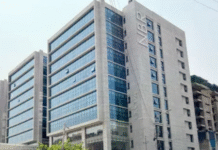South Asian Network on Economic Modeling or SANEM, a non-profit research organisation, has questioned the current fiscal year’s 8.13 percent economic growth projection.
Terming the recent economic growth of Bangladesh ‘puzzling’, it said the GDP growth mismatched the statistics and indicators of the country’s economic driving forces.
Earlier, the Centre for Policy Dialogue or CPD, an independent think tank, had also questioned the current year’s growth estimate citing inconsistencies in many economic indicators.
The Bangladesh Bureau of Statistics, or BBS, the national statistical agency, projected that the economic growth would hit 8.13 percent for the first time in the history of Bangladesh in the fiscal year that will end on June 30.
The World Bank predicted Bangladesh’s economy will grow at 7.3 percent in the fiscal year, lower than the government projection. The Asian Development Bank predicted 8 percent.

“It is said that the increased internal demand rather than exports, remittances and foreign investments brings impetus to the economic growth in Bangladesh. But domestic demand alone cannot bring such an explosive growth in a low-income country like Bangladesh,” said SANEM Executive Director Selim Raihan in Dhaka on Thursday.Referring to the Chinese economic growth, he said its growth rate has slowed down in recent years. One of the major reasons for this is that they adopted the policy of raising domestic consumption.
“So how do we explain this upward GDP growth? From academic and professional point of view, we are struggling to explain this growth,” said Raihan, also a professor of economics at Dhaka University.
Highlighting BBS statistics, he said private consumption growth was estimated at 3 percent in 2015-16, 7.43 percent in 2016-17 and 11.02 percent in 2017-18.
“The private consumption growth rate is unusual and puzzling,” he said.
He also expressed his doubt about the high manufacturing growth rate at 13.4 percent in fiscal 2017-18, although export growth was 5.81 percent during the same period when the private investment growth also remained slow.
“The manufacturing growth statistic does not match the poor business environment,” he said.
SANEM wondered how a country can achieve higher economic growth despite low growths in exports and private investment in the current fiscal year.
In 2018, Bangladesh also slipped in ranking in World Bank’s Doing Business and Logistics Performance Index, according to it.
Source: Bdnews24.










